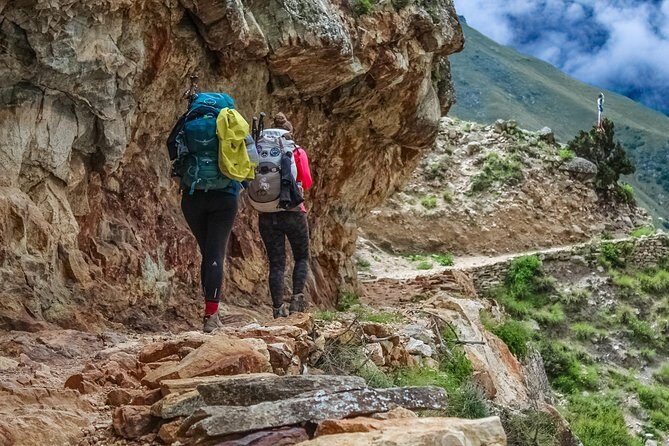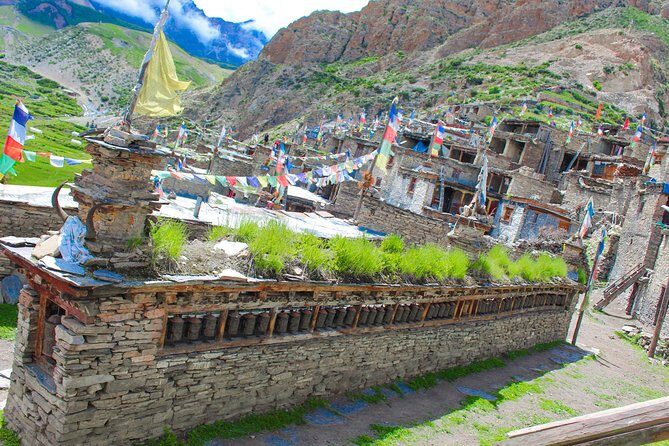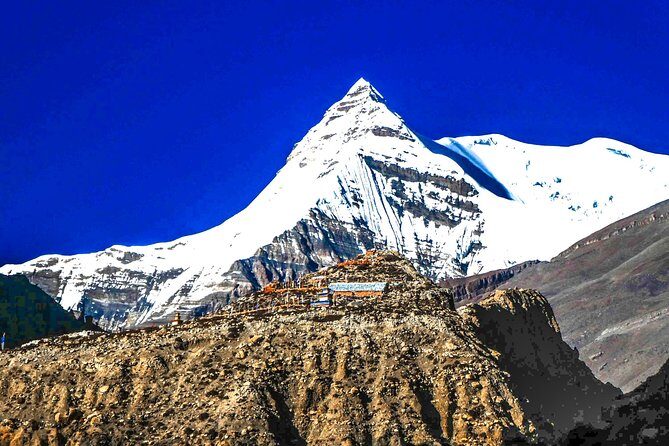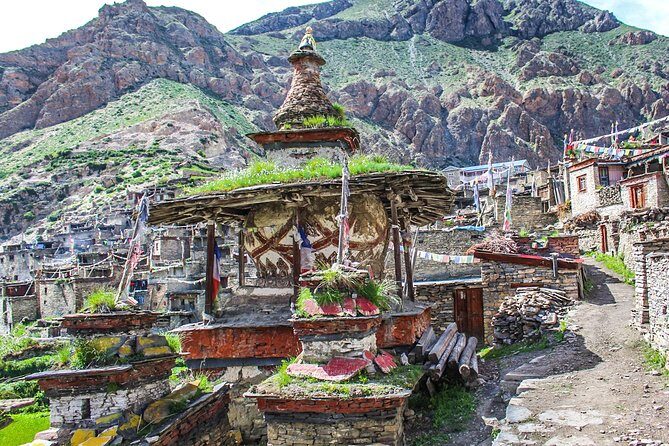Physical Address
304 North Cardinal St.
Dorchester Center, MA 02124
Physical Address
304 North Cardinal St.
Dorchester Center, MA 02124

Discover the remote Nar Phu Valley on a 9-day trek from Kathmandu. Experience stunning mountain views, Tibetan culture, and authentic mountain villages.
Nar Phu Valley Trek Review
Planning a trek that takes you off the well-worn tourist trail in Nepal? The Nar Phu Valley Trek might just be your new favorite adventure. This nine-day journey offers a rare glimpse into a largely untouched corner of the Himalayas, where towering peaks, ancient Tibetan-influenced villages, and serene alpine landscapes await. Unlike many popular routes, this trek is designed for those who seek a physical challenge paired with genuine culture — and it does not shy away from demanding long days of hiking.
One of the things we love about this trek is the way it combines spectacular mountain scenery with authentic local culture. The remote villages, with their Tibetan-style architecture and centuries-old monasteries, feel like stepping back in time. Plus, the views of giants like Annapurna II, Himlung Himal, and Manaslu are truly unforgettable. That said, the trek isn’t a casual walk in the park; it requires good physical fitness and some previous hiking experience, especially for crossing high passes like Kang La and Thorong La.
A potential consideration is the altitude — the route climbs over 5,300 meters. While the itinerary includes time for acclimatization, travelers must be prepared for the physical and mental demands of high-altitude trekking. Also, it’s a more remote experience, so comfort levels are modest, with guesthouses serving as the primary accommodation.
This trek suits adventurers who are fit, experienced hikers, and eager to explore lesser-traveled routes. If you’re drawn to remote Himalayan valleys, don’t mind some challenging ascents, and value authentic cultural encounters, you’ll find this journey rewarding.

Outdoor enthusiasts can explore more Kathmandu trails with these hiking options
Starting from Jagat, which is along the popular Annapurna Circuit, the trek quickly veers off the beaten path as you head toward Koto. From here, the trail becomes noticeably quieter, with fewer trekkers and more pristine mountain scenery. The journey from Jagat to Koto sets the tone — a mix of gentle ascents, winding trails, and the anticipation of discovering something truly unique.
Once you leave the mainstream circuit behind, the trail climbs toward the Nar Phu Valley, a region only recently accessible to foreign travelers. This part of the trek offers a sense of discovery and adventure. You’ll pass through ancient villages where Tibetan-style architecture, prayer flags fluttering in the wind, and monasteries seem frozen in time. The local communities here are welcoming, eager to share their traditional ways of life, which have been preserved over centuries.
One of the highlights (and challenges) is crossing the Kang La Pass at 5,315 meters. This is a demanding ascent, but the panoramic views at the top are worth every step. You’re rewarded with sweeping vistas of Annapurna, Himlung Himal, and Annapurna II. Experienced reviews highlight the breathtaking scenery and the sense of achievement crossing such a high pass. The climb can be tough, especially if altitude starts to take its toll, but proper acclimatization is built into the itinerary.
Post-Kang La, the trail takes you into the high alpine valleys of Nar and Phu, both of which are mesmerizing. These valleys are less developed, with fewer travelers, and offer a peaceful respite amid towering peaks. Expect to see traditional villages, yak herders, and ancient monasteries. The Tashi Lakhang Monastery is a noteworthy stop that provides insight into local spiritual life.
From Nar Phu, the trek heads toward the Thorong La Pass at 5,416 meters, the highest point of the entire Annapurna Circuit. This section is physically demanding but offers stunning views of Annapurna massif and surrounding giants. Many trekkers find the descent into Muktinath — a sacred Hindu and Buddhist pilgrimage site — to be profoundly spiritual and scenic.
After crossing Thorong La, you’ll descend into the Mustang region, following trails that lead to Jomsom. From here, a short flight to Pokhara and then Kathmandu wraps up the adventure. The journey back offers a chance to reflect on the remote corners you’ve explored, as well as the mountain vistas that linger in your mind.
The $1,400 price tag covers a lot — permits, accommodations, guides, transportation, and necessary permits like the Annapurna Conservation Area and Trekkers’ Information Management System (TIMS). The inclusion of guesthouse accommodations means you’ll experience local hospitality without the premium costs of lodges or hotels. The trek also provides trekking maps and use of trekking gear, such as sleeping bags and down jackets, which can be refunded after the trip.
However, some expenses aren’t included, such as personal expenses, laundry, bar bills, and tips. Travelers should budget for these extras, especially tipping guides and porters, which is customary but not obligatory.
A key aspect is the expert guidance from licensed, English-speaking guides. One review mentions that guides are knowledgeable and helpful, which is crucial in remote areas where navigation and safety are paramount. Their local insights enrich the experience, helping travelers understand the cultural significance of sites and local customs.
Transportation from Kathmandu to Koto and back from Jomsom is included, which simplifies logistics. The early start at Kathmandu’s Tribhuvan Airport and the scheduled flights keep the journey smooth and efficient, avoiding long overland drives that can be tiring and less scenic.

From the moment you start the trek, you’ll notice the contrast: lush greenery turns into stark, rugged mountain terrain. The guesthouses along the trail offer basic but cozy accommodations, often with communal dining areas. Expect a friendly, communal atmosphere that adds to the adventure.
The views are the real star here. Expect picture-perfect scenes of snow-capped peaks, high mountain passes, and ancient villages. One reviewer mentions “stunning panoramic views” from the passes, which are truly worth the effort. The cultural stops at monasteries and villages give a sense of the local Tibetan-influenced lifestyle, with prayer flags, mani walls, and local festivals often visible.
While the trek is designed with acclimatization days, the high altitude means you should be prepared for shortness of breath and fatigue. The ascent to Kang La and Thorong La Pass can be particularly taxing, but for those with long-distance hiking experience, it’s manageable with proper preparation.
Reviews highlight that the local communities are welcoming and eager to share their traditions. Many trekkers appreciate the chance to see less touristy villages where life continues unchanged by modern tourism. Expect to see ancient monasteries, prayer wheels, and local festivals depending on the timing.

This trip is not for beginners. You should have previous long-distance trekking experience and good physical fitness. The high passes and altitude require mental resilience and physical endurance. If you’re craving an adventure that combines mountain scenery with cultural exploration, while avoiding crowds, this trek will suit you well.
It’s perfect for travelers who want a meaningful challenge and are comfortable with basic accommodations and rugged terrain. If you’re seeking a journey with authentic Himalayan culture, fewer travelers, and jaw-dropping vistas, this trek delivers in spades.

At $1,400, the Nar Phu Valley Trek offers excellent value for an all-inclusive, well-organized adventure. Permits, transportation, expert guides, and guesthouse stays are included, making it easier to focus on the experience rather than logistics. The remote nature of the trail makes it worth the investment for those wanting an off-the-beaten-path adventure.
While the cost may seem high compared to shorter or less remote treks, the scope of the journey, cultural exposure, and stunning scenery justify the price for seasoned trekkers. It’s a worthwhile investment if you’re after a truly authentic Himalayan experience away from the crowds.
What is included in the tour price?
The price covers permits, guesthouse accommodations, transportation from Kathmandu to Koto and back from Jomsom, English-speaking guides, local staff, trekking maps, and some gear like sleeping bags and down jackets (refundable after the trek).
Are airport transfers included?
Yes, private airport pickup and drop-off in Kathmandu are included in the package.
What kind of physical fitness is needed?
A moderate fitness level is recommended, especially for long days of uphill climbing and crossing high passes like Kang La and Thorong La.
Can beginners do this trek?
No, this trek is best suited to experienced hikers with previous long-distance trekking experience due to the high altitude and challenging terrain.
How are the accommodations?
Guesthouse stays are included, offering simple but comfortable rooms. Expect communal dining areas and basic amenities.
What about altitude sickness?
The itinerary includes acclimatization days, but trekkers should be prepared for the effects of high elevation, including shortness of breath and fatigue.
Is the trek guided?
Yes, a government-licensed, English-speaking guide leads the group, providing safety, local insights, and cultural context.
What is the best time to do this trek?
While not explicitly stated, the best times are typically during the dry seasons in spring and autumn, when weather conditions are most stable.
How do I get back to Kathmandu?
After crossing Thorong La, you descend into Jomsom for a flight back to Pokhara and then a transfer to Kathmandu.
To sum it up, the Nar Phu Valley Trek stands out as a remarkable journey for experienced trekkers seeking genuine Himalayan adventure. It combines challenging passes, remote villages, and breathtaking views, all while avoiding the crowds. For those prepared for a physical challenge and eager for cultural enrichment, this trek offers a rewarding escape into one of Nepal’s most secluded regions.